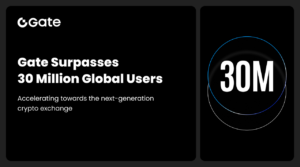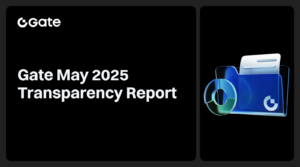
web 3 security
The rapid advancement of technology has paved the way for the evolution of the internet from its static origins to a more dynamic and decentralized ecosystem known as WEB 3. This new era brings forth numerous opportunities but also poses unique challenges, particularly in terms of security. In this article, we will delve into the fundamentals of WEB 3 security, exploring its key concepts, technologies, and best practices.
Introduction to WEB 3 and its Security Challenges
1. Defining WEB 3 and its Features
WEB 3, also referred to as the decentralized web, is a paradigm shift from the traditional web models, WEB 1 and WEB 2. It aims to create a more open, transparent, and user-centric online environment by leveraging decentralization, blockchain technology, and smart contracts.
2. Importance of Security in WEB 3 Applications
As the decentralized web gains momentum, it becomes crucial to understand the security challenges that accompany this new paradigm. With the increased autonomy and control provided to users, securing data, transactions, and identities becomes paramount to foster trust and ensure the integrity of WEB 3 applications.
The Evolution of Internet Security
The journey towards WEB 3 security necessitates a retrospective look at the security challenges faced during the WEB 1 and WEB 2 eras.
1. Overview of WEB 1 and WEB 2 Security Challenges
In the early days of the internet, WEB 1, security concerns were largely focused on protecting individual computers from malware and unauthorized access. With the advent of WEB 2, which introduced dynamic content and user-generated platforms, new challenges emerged, including phishing, data breaches, and identity theft.
2. Introducing the Need for Enhanced Security in WEB 3
WEB 3, with its decentralized architecture, requires a different approach to security. The shift from centralized intermediaries to decentralized networks introduces novel vulnerabilities that must be addressed to ensure the safety and trustworthiness of the platform.
Decentralization and Security in WEB 3
Decentralization lies at the core of WEB 3 and significantly impacts its security landscape.
1. Explaining the Concept of Decentralization
Decentralization involves the distribution of authority and control across a network of participants, eliminating the reliance on central authorities. This democratized structure enhances censorship resistance and immutability but also introduces new security challenges.
2. How Decentralization Affects Security in WEB 3
While decentralization offers increased resilience, it introduces potential vulnerabilities such as 51% attacks, Sybil attacks, and governance issues. Proper security measures and consensus mechanisms are essential to mitigate these risks effectively.
Blockchain Technology and its Role in WEB 3 Security

Blockchain technology, the backbone of WEB 3, plays a vital role in ensuring security and trust in decentralized applications.
1. Understanding the Fundamentals of Blockchain
Blockchain is a distributed ledger that records transactions across multiple nodes in a secure and transparent manner. It provides immutability, transparency, and integrity, making it a powerful tool for securing WEB 3 applications.
2. Benefits of Blockchain for Security in WEB 3
Blockchain offers several key benefits for security in WEB 3, including data immutability, cryptographic hashing, and consensus mechanisms. These features enhance the integrity and trustworthiness of the decentralized web.
Smart Contracts and their Security Considerations
Smart contracts, self-executing contracts with predefined conditions, play a crucial role in WEB 3 applications but require careful attention to security.
1. Exploring Smart Contracts and their Functionality
Smart contracts automate agreements and transactions without the need for intermediaries. They operate based on predetermined rules and execute actions when specific conditions are met.
2. Common Security Vulnerabilities in Smart Contracts
Despite their potential, smart contracts are susceptible to vulnerabilities. Issues such as reentrancy attacks, integer overflow, and unhandled exceptions can be exploited by malicious actors. Thorough auditing and best coding practices are essential for secure smart contract development.
Cryptography and Encryption in WEB 3
Cryptography serves as the backbone of security in WEB 3, enabling secure communication, data protection, and identity management.
1. Importance of Cryptography in Securing WEB 3 Applications
Cryptography provides the means to encrypt and decrypt data, verify digital signatures, and secure transactions. Its robust algorithms ensure confidentiality, integrity, and authenticity in a decentralized environment.
2. Different Encryption Methods Used in WEB 3
WEB 3 employs various encryption methods, including symmetric encryption, asymmetric encryption, and hash functions. These cryptographic techniques safeguard data privacy and protect sensitive information.
Identity Management and Privacy in WEB 3
Identity management and privacy are critical considerations in the decentralized web.
1. Challenges of Identity Management in a Decentralized Environment
In WEB 3, users have control over their identities and can interact with applications pseudonymously or anonymously. However, managing identities in a decentralized and interoperable ecosystem poses challenges such as identity theft and sybil attacks.
2. Solutions for Maintaining Privacy in WEB 3 Applications
To address privacy concerns, technologies such as zero-knowledge proofs and decentralized identifiers (DIDs) are employed in WEB 3. These solutions enable users to authenticate themselves without revealing sensitive information.
Interoperability and Security in WEB 3 Ecosystems
Interoperability, the ability of different protocols and applications to interact seamlessly, introduces both opportunities and security considerations.
1. Overview of Interoperability in WEB 3
Interoperability allows WEB 3 applications to leverage the functionality of multiple protocols and interact with various blockchain networks. This interoperable nature enhances user experience but also poses challenges in terms of security and trust.
2. Ensuring Security while Interacting with Different Protocols
When operating in a multi-chain environment, it is crucial to establish secure communication channels, validate inputs and outputs, and carefully handle data across different protocols. Standards like cross-chain bridges and secure oracles help maintain security during interoperability.
Web Browser Security and WEB 3
Web browsers serve as gateways to WEB 3 applications but also introduce potential security risks.
1. The Role of Web Browsers in Accessing WEB 3 Applications
Web browsers enable users to access decentralized applications (dApps) and interact with blockchain networks. They provide user-friendly interfaces but may also serve as potential attack vectors.
2. Security Considerations when Using Web Browsers in WEB 3
To enhance security, browser extensions like MetaMask and secure browsing protocols like HTTPS are employed. However, users must remain vigilant, exercise caution with browser plugins, and verify the authenticity of dApps before interacting with them.
Auditing and Testing for Security in WEB 3
Thorough auditing and testing are essential to identify and mitigate security vulnerabilities in WEB 3 applications.
1. Importance of Auditing and Testing for Identifying Vulnerabilities
Auditing and testing processes help uncover potential security flaws, such as bugs, vulnerabilities, and misconfigurations, in WEB 3 applications. This ensures the integrity, reliability, and trustworthiness of the decentralized ecosystem.
2. Best Practices for Auditing and Testing WEB 3 Applications
Security audits, code reviews, and penetration testing are vital for assessing the security posture of WEB 3 applications. Emphasizing secure coding practices, adherence to standards, and continuous monitoring contributes to robust security.
User Awareness and Education for WEB 3 Security
Promoting user awareness of security risks and educating them about best practices is crucial for a safe WEB 3 environment.
1. Promoting User Awareness of Security Risks in WEB 3
Users must be aware of the risks associated with WEB 3, including phishing attacks, fake dApps, and social engineering. Educating them about potential threats and providing security guidelines helps foster responsible user behavior.
2. Educating Users about Best Security Practices in WEB 3
Empowering users with knowledge about secure wallet management, safe transaction practices, and verifying the authenticity of dApps enhances their ability to protect themselves in the decentralized ecosystem.
Regulatory Challenges and Legal Considerations in WEB 3 Security
The decentralized nature of WEB 3 introduces regulatory and legal complexities that must be addressed for a secure environment.
1. Overview of Regulatory Challenges in a Decentralized Ecosystem
Regulatory frameworks often struggle to keep pace with technological advancements. The absence of centralized authorities and the global nature of WEB 3 present challenges in enforcing regulations and addressing illicit activities.
2. Legal Implications and Considerations for WEB 3 Security
Legal aspects such as data protection, intellectual property rights, and jurisdictional issues require careful consideration in WEB 3. Collaborative efforts between policymakers, legal experts, and the technology community are necessary to navigate these challenges.
Future Trends and Advancements in WEB 3 Security
WEB 3 security is an evolving field, and several trends and advancements are shaping its future landscape.
1. Predictions for the Future of Security in WEB 3
As technology evolves, solutions such as multi-party computation, homomorphic encryption, and privacy-preserving protocols are expected to play a significant role in enhancing WEB 3 security. Interdisciplinary collaborations and ongoing research will drive innovation in the field.
2. Emerging Technologies and their Impact on WEB 3 Security
Emerging technologies like artificial intelligence, quantum computing, and secure hardware modules have the potential to both enhance and disrupt WEB 3 security. It is crucial to monitor their development and adapt security measures accordingly.
Conclusion
In conclusion, WEB 3 represents a paradigm shift in the internet landscape, emphasizing decentralization, trust, and user empowerment. However, with this transformation comes the need for robust security measures. By understanding the fundamentals of WEB 3 security, including decentralization, blockchain technology, smart contracts, cryptography, and user awareness, we can build a secure and trustworthy decentralized web.
The fundamental principles of decentralization, blockchain technology, smart contracts, cryptography, and user education play a pivotal role in safeguarding WEB 3 applications. By implementing robust security measures, conducting thorough audits, and promoting user awareness, we can create a more secure and trustworthy environment. However, it is essential to remain vigilant and adapt to emerging technologies and regulatory challenges. With continued research, innovation, and collaboration, we can shape the future of WEB 3 security, ensuring a safer and more resilient decentralized web for all. Remember, security is not just a feature but a fundamental pillar of WEB 3’s success.
I have worked in the cryptocurrency industry for over 5 years and have written numerous articles on the subject. I am well-versed in all aspects of cryptocurrencies and blockchain technology, and am an expert in the field.








